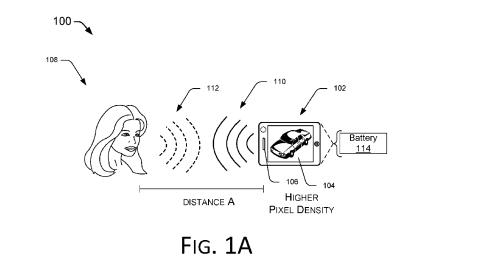Microsoft’s latest patent application reveals an interesting piece of technology that we might very well see in the immediate feature. As all of us know the resolution of the display is only as good as the distance between the screen and the users. Smartphones have been offering FHD, 4K displays while some of the TV’s top the chart with 8K.

Dynamic Display Resolution
Take for instance the FHD display has been more or less than the standard and the makers claim that the pixels are so dense that it would be impossible to distinguish them with naked eyes but again like all the other technologies even this one comes with a caveat. The observer needs to be anchored at 12-inch from the display. If not the entire premise of adding extra pixels on displays is futile.
A computing device may dynamically adjust a pixel density based at least in part on a viewing distance between a user and a display of the computing device. In some examples, the viewing distance may be determined using low power acoustic (e.g., ultrasonic) sensing. A pixel density at which to display content may be determined using algorithms based on the viewing distance and a visual acuity of a user. Content to be displayed on the computing device may be sent to processors of the computing device for graphics processing. In some examples, the content may be intercepted, such as by using a hooking process, before processing and scaled based on the determined pixel density. Scaling down the pixel density of the content may require less system resources to process the content, which may result in less power consumption by the processors to perform the graphics processing operations.”
The use cases for an FHD display turn unreasonable since in devices like the Google Glass and the VR headset you need to hold the display right next to your eyes. Microsofts latest patent aims at solving this pain point by adjusting the resolution dynamically, what this means is that the resolution of the screen is immediately altered by calculating the distance from your eyes, especially when one holds the display close to their eyes.
The patent describes how they could use an acoustic proximity sensor to judge the distance. This works in the same way as the proximity sensor on our phone that automatically dims/turns off the display as soon as one places the earpiece on their ears during an ongoing call.
This article fails to mention the purpose of lowering the resolution, would it save battery life?